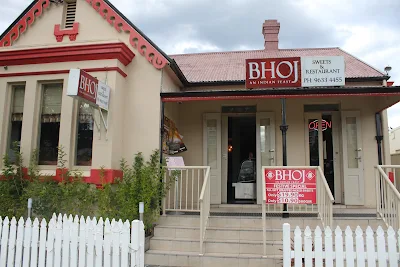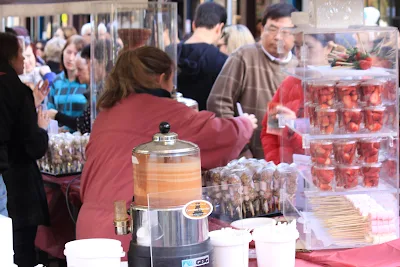Wigram Street in Harris Park, NSW, offers an interesting array of commercial retailers alongside its residential houses. Inside the Taj Indian Sweets (photo above), there are satellite broadcasts, a range of traditional sweets to choose from and a busy indoors. Below, the Bhoj Sweets & Restaurant, housed in a renovated 19th century former suburban house with steps and a white picket fence. The Bhoj is also the name of a different chain in the Melbourne, Victoria area, in both Templestoe and the Docklands. Bhoj in the Hindi language, I reckon, refers to both a boy's name and a feast or banquet. The Taj is the Crown.
The ambiance in Harris Park is definitely homely, with a feel of weekend solitude, a working bird bath (picture below) and vehicles parked on the streets. Residents in the greater Sydney area with an Indian background are also found in hubs like in Blacktown, Quackers Hill, Westmead, Liverpool, Kellyville and Glenwood.
There are old world groceries and new-fangled diners around the corners of Harris Park. Apart from Indian, the multi-cultural character of Sydney suburbs does shine through. I noticed the Olive Greek Restaurant along Marion Street near the rail station. Diners get the full expereince of Mythos Lager, garlic sensations and a live traditional music band on Saturday evenings.
Some homes have well kept gardens and herbal clusters. What intrigued me was the marriage of Chinese and Indian cooking in the restaurant called Indian Chopsticks (below). Yes, they offer deep fried spring rolls. There are also dishes made with the Chinese five spice mix, in addition to the Indian garam masala. Mushrooms are stir fried on the wok with peppers and ginger - hey, a good accompaniment to beer! Prawns are dipped in batter and given a coating of sesame seeds. Cauliflower cuts are marinated with spicy masala and deep fried like in tempura.
There are vegetarian and chicken dishes labelled as Manchurian. Besides the Bombay chili fish, prawn masala and the signature lamb curry, you get a host of so-called Chinese cuisine dishes ala the Sixties - sweet and sour, noodles, Mongolian, Fujian or Hokkien fried rice and honey chicken bites.

















































